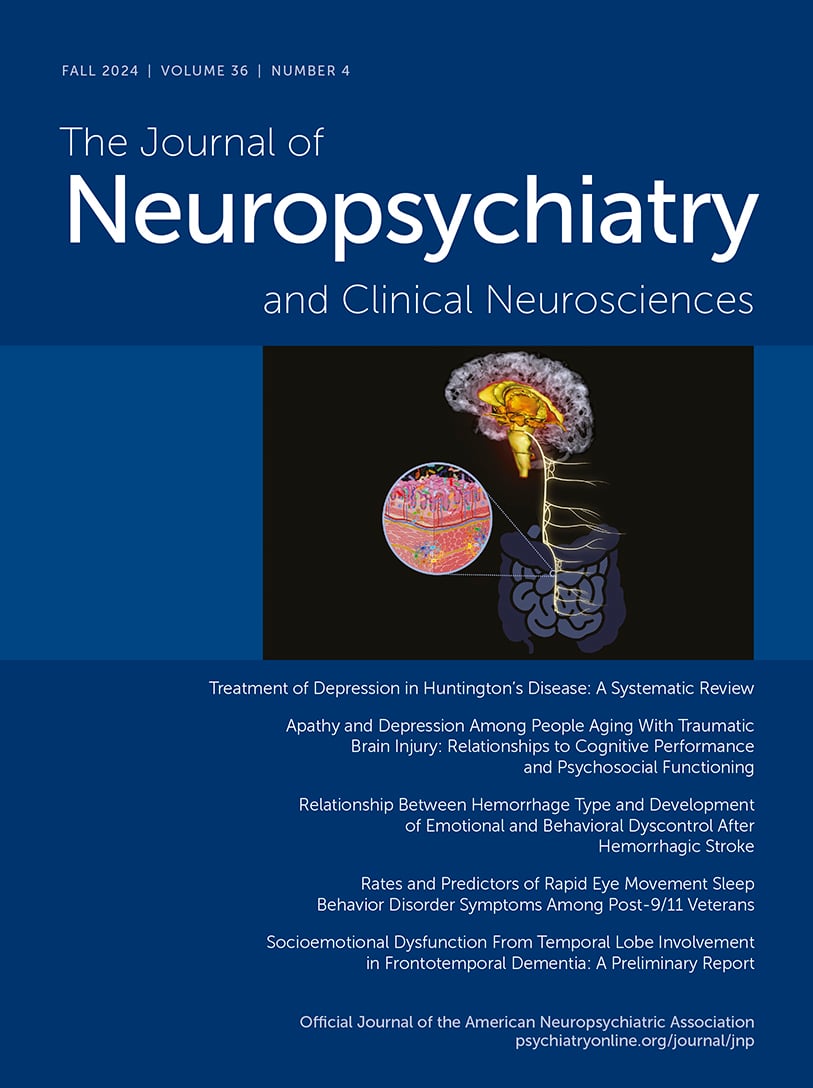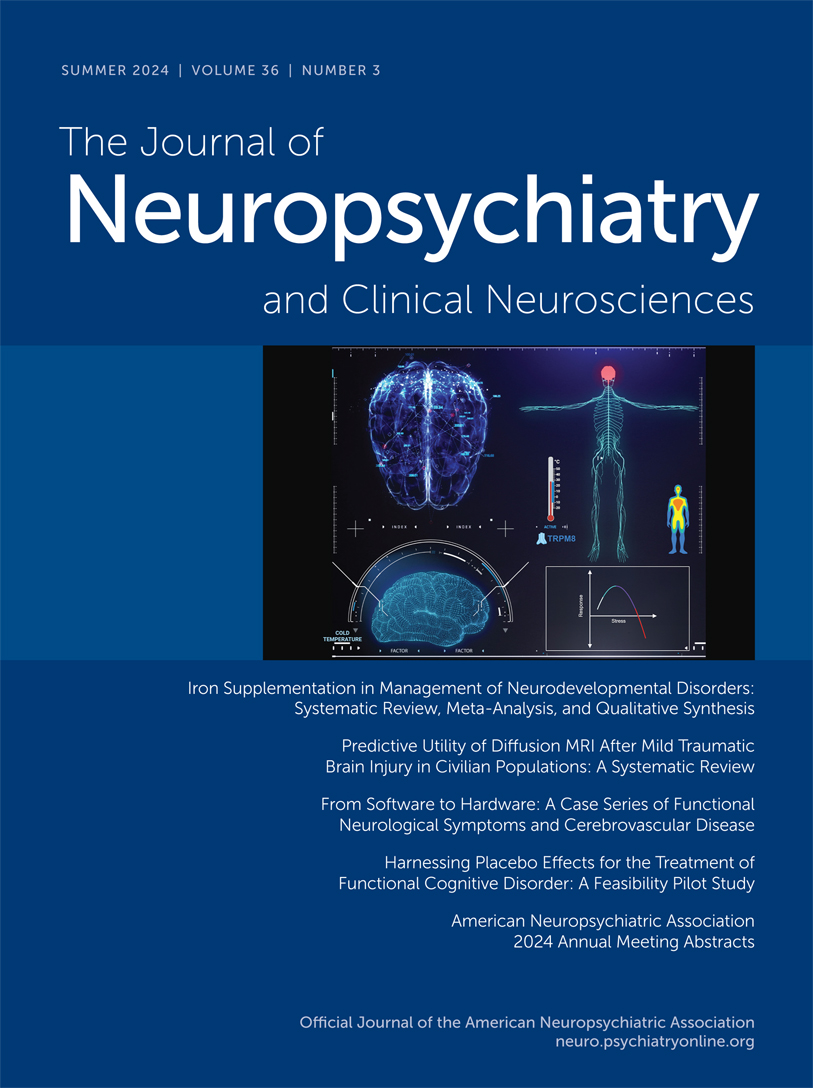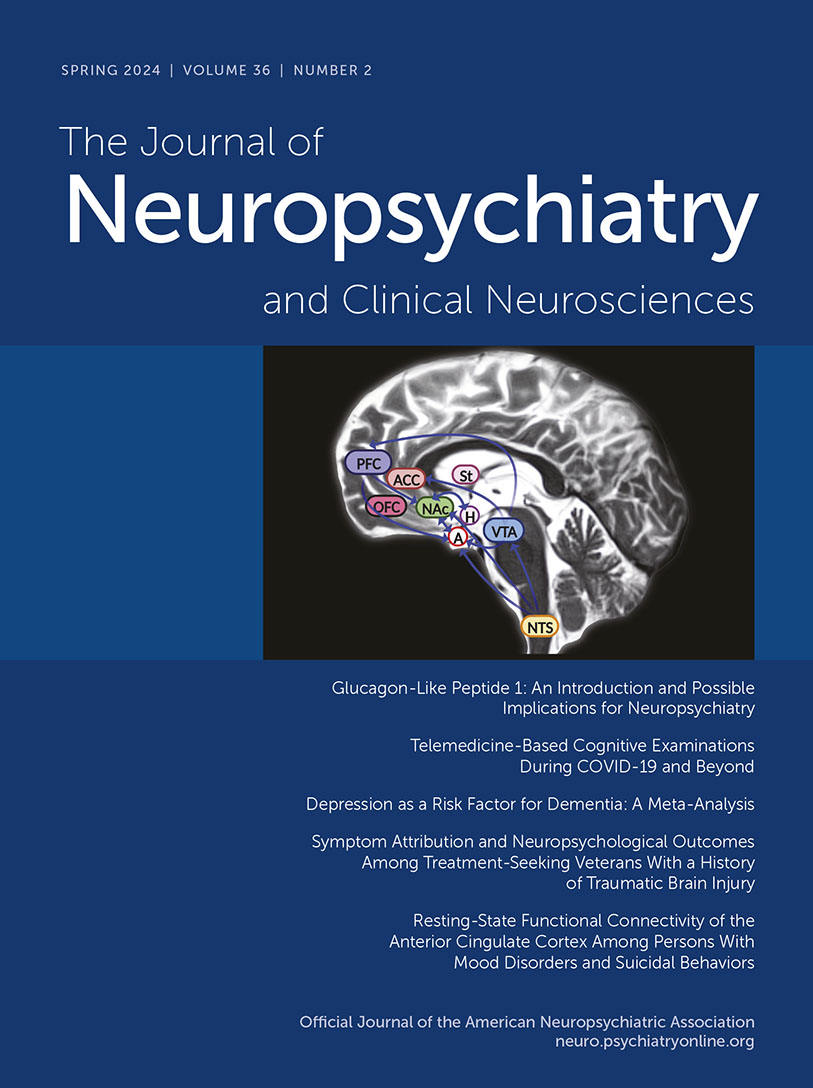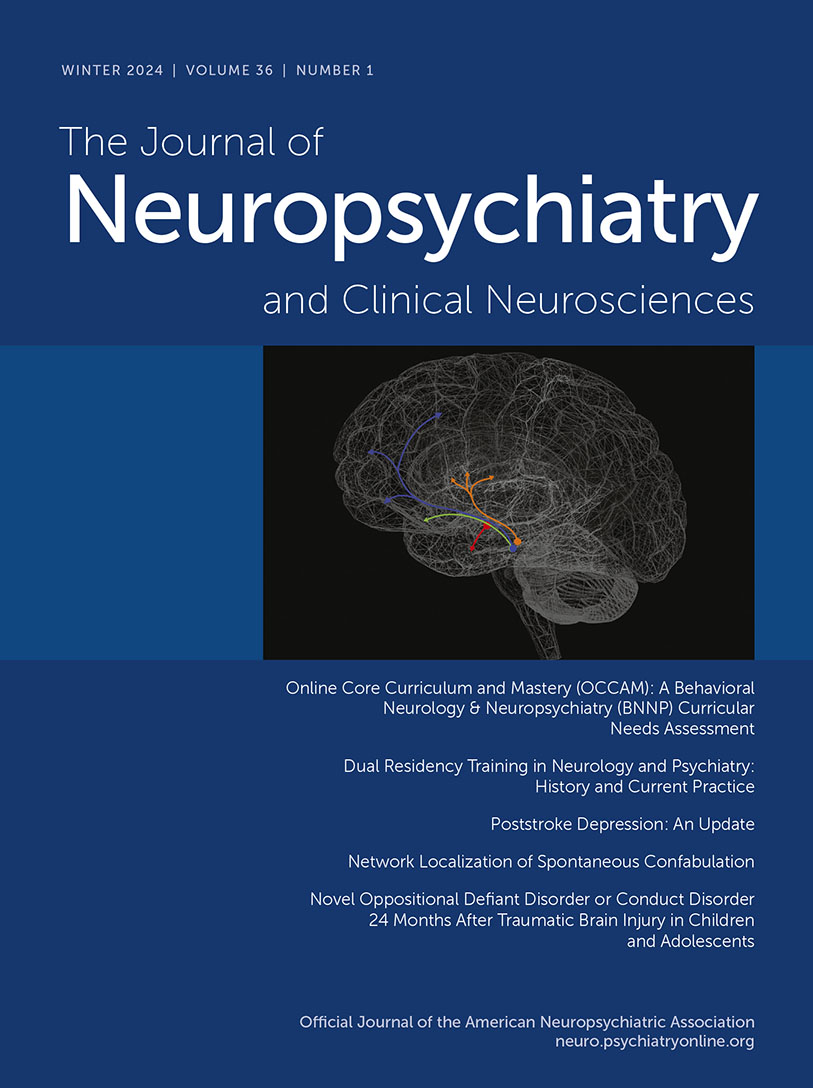The Journal of Neuropsychiatry and Clinical Neurosciences
- Volume 25
- Number 1
- January 2013
Letters
Windows to the Brain
Publication date: 01 January 2013
Pages1–5In this installment of the Windows to the Brain series, the authors present detailed, graphic representation of neuronal injury for all levels of traumatic brain injury (TBI), including mild. We see representation of the swollen axon profiles ...
https://doi.org/10.1176/appi.neuropsych.12120401Special Articles
Publication date: 01 January 2013
Pages6–11The foundation of neuropsychiatry rests upon the relationship between the brain and behavior. Neuropsychiatrists evaluate patients with neurological disorders and general medical conditions who are experiencing psychiatric symptoms. Knowledge of ...
https://doi.org/10.1176/appi.neuropsych.11040097Publication date: 01 January 2013
Pages12–25Recent research has demonstrated that veterans with chronic combat-related posttraumatic stress disorder (PTSD) have a twofold increased risk of developing dementia. This review of current literature details neuroanatomical differences between veterans ...
https://doi.org/10.1176/appi.neuropsych.12010003Regular Articles
Publication date: 01 January 2013
Pages26–31Periventricular heterotopia (PH) is a disorder of neuronal migration. Previous clinical reports of PH have largely focused on the seizure-related and neurodevelopmental consequences of this condition. The authors report on four unrelated individuals with ...
https://doi.org/10.1176/appi.neuropsych.11110336Publication date: 01 January 2013
Pages32–39NeuroQuant® is a recently developed, FDA-approved software program for measuring brain MRI volume in clinical settings. The purpose of this study was to compare NeuroQuant with the radiologist’s traditional approach, based on visual inspection, in 20 ...
https://doi.org/10.1176/appi.neuropsych.11120377Publication date: 01 January 2013
Pages40–50Decreased treatment adherence in patients with diabetes mellitus type 1 (type 1 DM) may reflect impairments in decision-making and underlying associated deficits in working memory and executive functioning. Other factors, including comorbid major ...
https://doi.org/10.1176/appi.neuropsych.12010016Publication date: 01 January 2013
Pages51–57The effects of RU-486, a glucocorticoid antagonist, on HIV infection and replication in depressed and nondepressed women were studied using ex vivo models of HIV infection. RU-486 treatment of cells decreased HIV reverse transcriptase activity of monocyte-...
https://doi.org/10.1176/appi.neuropsych.12060147Clinical and Research Reports
Publication date: 01 January 2013
Pages58–62Tardive dysmentia has been described as the behavioral equivalent of tardive dyskinesia in patients with schizophrenia. Its association with tardive dyskinesia and psychopathology has been controversial. The authors assessed 123 inpatients with chronic ...
https://doi.org/10.1176/appi.neuropsych.12020024Publication date: 01 January 2013
Pages63–67The authors investigated factors relevant to treatment retention and initial adherence in patients with psychogenic non-epileptic seizures. The factors studies were 1) treatment modality, that is, whether psychotherapy and neuropsychiatric management were ...
https://doi.org/10.1176/appi.neuropsych.11090223Publication date: 01 January 2013
Pages68–71The authors present the case of a 37-year-old man who developed a psychotic manic episode and was found to have bilateral basal ganglia calcification (BGC). The authors present this case report along with a discussion of the literature on the ...
https://doi.org/10.1176/appi.neuropsych.12090222Clinical And Research Reports
Publication date: 01 January 2013
Pages72–82Numerous reports have brought attention to the potential role of cytokines in schizophrenia. The aim of the study was to determine whether polymorphisms of IL-2, IL-6, and TNFα genes are risk factors for development of paranoid schizophrenia in a Polish ...
https://doi.org/10.1176/appi.neuropsych.12020021Clinical and Research Reports
Publication date: 01 January 2013
Pages83–87This study is the first to show a relationship between in-vivo brain gamma-amino butyric acid (GABA) levels and auditory inhibitory electrophysiological measures in schizophrenia. Results revealed a strong association between GABA levels and gating of the ...
https://doi.org/10.1176/appi.neuropsych.11120368Publication date: 01 January 2013
Pages88–94The brain-derived neurotrophic factor (BDNF) is one of the candidate genes for schizophrenia. There is evidence that val66met polymorphism may be involved in the pathophysiology of schizophrenia. The authors genotyped val66met (rs6265) polymorphism of the ...
https://doi.org/10.1176/appi.neuropsych.11100234Past Issues
View Issues Archive
Vol. 36 | No. 4

Vol. 36 | No. 3

Vol. 36 | No. 2
